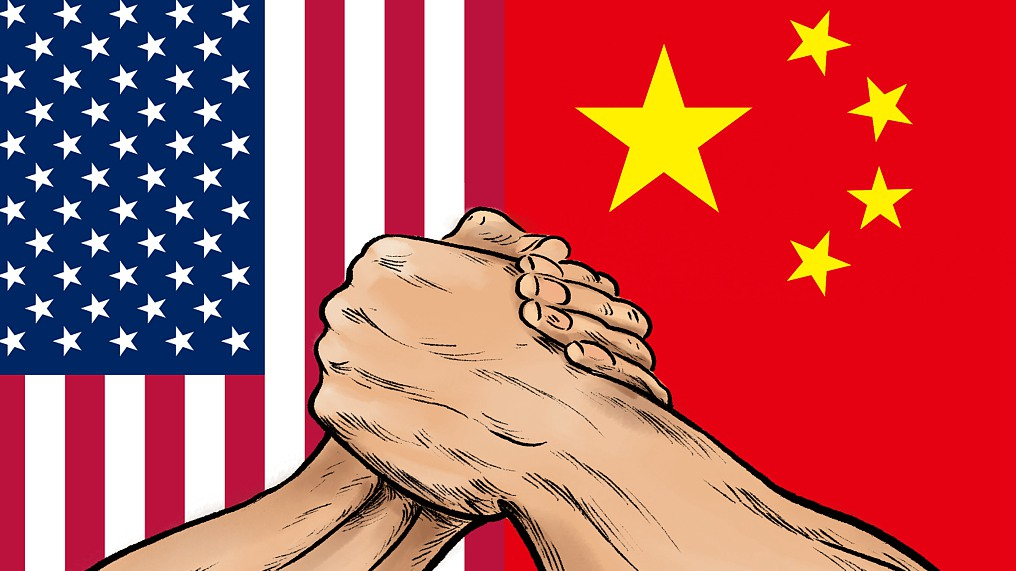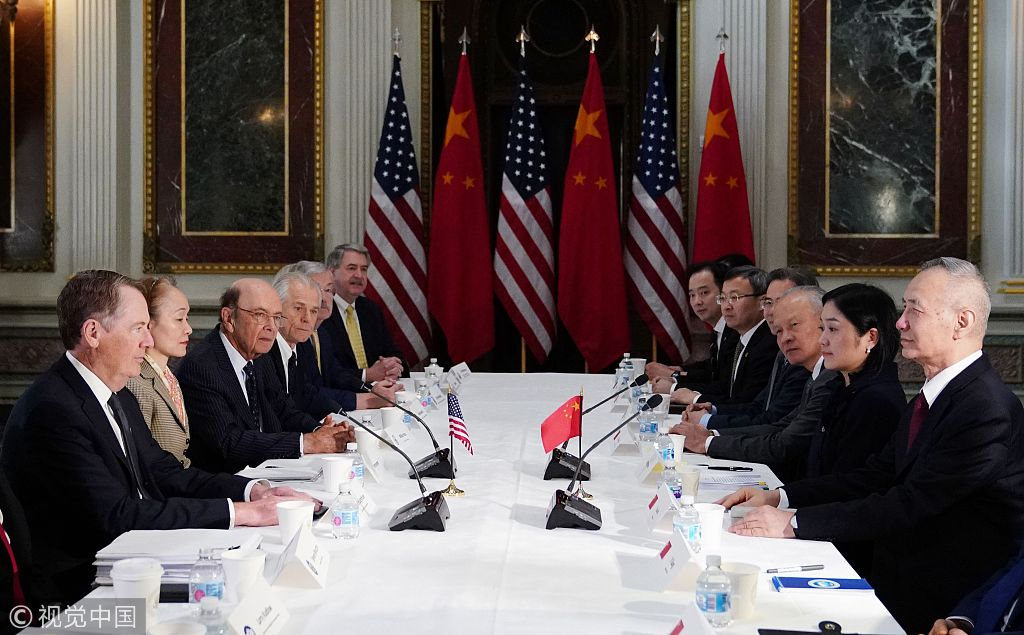
Opinion
21:21, 10-Mar-2019
China-U.S. trade war train reaches its final destination
Sayed Attia

Editor's Note: Sayed Attia is an international trade expert in Egypt. The article reflects the author's opinion, and not necessarily the views of CGTN.
There are reports that Chinese President Xi Jinping and U.S. President Donald Trump will meet at Mar-a-Lago soon to discuss a number of issues, the most important of which is an end to the trade war.
The potential Mar-a-Lago meeting takes us back to February 27, 1972, when the two sides had a serious and frank exchange of views on Sino-U.S. relations and world affairs and issued a joint communiqué, commonly known as the "Shanghai Communiqué." At the time, the People's Republic of China and U.S. found it beneficial to have an opportunity to candidly share their views on a variety of issues.
One of the main accomplishments of the Shanghai Communiqué was that both sides considered bilateral trade as an area from which mutual benefit can be derived, and agreed that economic relations based on equality and mutual benefit are in the interest of the people of the two countries. They agreed to facilitate the progressive development of trade between them.
A prospective deal between China and the U.S. will not only benefit both sides but also the global economy as a whole. Both countries constitute a great portion of global trade.
According to the World Trade Organization, China's merchandise exports represent 13 percent of global exports while U.S. exports represent 9 percent. Products produced in both countries are not completely produced inside the two countries but are part of the global value chain that involves other countries. This means, reaching a deal between China and the U.S. will be in the interest of global trade.

U.S. Trade Representative Robert Lighthizer (L) takes part in China-U.S. trade talks with China's Vice Premier Liu He (R) in the Eisenhower Executive Office Building in Washington, DC on February 21, 2019. /VCG Photo
U.S. Trade Representative Robert Lighthizer (L) takes part in China-U.S. trade talks with China's Vice Premier Liu He (R) in the Eisenhower Executive Office Building in Washington, DC on February 21, 2019. /VCG Photo
Have U.S. tariffs on Chinese goods achieved their goals?
Economists from the Federal Reserve Bank of New York, Princeton University and Columbia University found that tariffs imposed last year by the Trump administration on Chinese imports were costing U.S. companies and consumers 3 billion U.S. dollars a month in additional tax costs and companies a further 1.4 billion U.S. dollars in dead-weight losses.
Furthermore, these tariffs were causing the diversion of 165 billion U.S. dollars a year in trade leading to significant costs for companies having to reorganize supply chains. Others estimate that about 283 billion U.S. dollars' worth of imports —12 percent of total imports — were hit by duties. This was further exacerbated by retaliation from foreign countries, which raised tariffs of their own, affecting about 121 billion U.S. dollars of U.S. exports.
Although tariffs are in place, some media reports indicated that the U.S. trade balance suffered a historical deficit of 891 billion U.S. dollars, a blow to Trump's "America First" policy, which he promised to spur the economy. These press reports referred to the United States Department of Commerce as saying the U.S. has imported record volumes of goods from China, Mexico and the European Union, even after Washington imposed high tariffs on imports from its main trade partners.
Most importantly, the main victims of Trump's trade war have been the farmers and blue-collar workers in areas that supported Trump in the 2016 election. Workers in very Republican counties bore the brunt of the costs of trade war either because retaliations disproportionately targeted agriculture sectors, or because U.S. tariffs raised the costs of inputs used by these counties.
The basis upon which the tariffs were imposed, i.e. national security considerations, was not a proper justification. President Trump once said tariffs were the greatest negotiating tool in the history of the United States.
It seems it was strategic to enter into negotiations with China, as Trump did with Canada and Mexico to change the rules of NAFTA under the guise that this agreement was not in the interest of the U.S. economy. However, regardless of the causes, the global economy is generally affected by the consequences, particularly as growth suffers a slowdown.
In conclusion, it is high time to take matters seriously and put them in the right context. The right context is to let nature takes its course and avoid resorting to protectionist measures as they do not serve anyone's interest. The deal expected between the two presidents should go back to the situation before imposing such tariffs. The deal should be based on merely economic considerations without exaggerating concessions.
(If you want to contribute and have specific expertise, please contact us at opinions@cgtn.com.)

SITEMAP
Copyright © 2018 CGTN. Beijing ICP prepared NO.16065310-3
Copyright © 2018 CGTN. Beijing ICP prepared NO.16065310-3